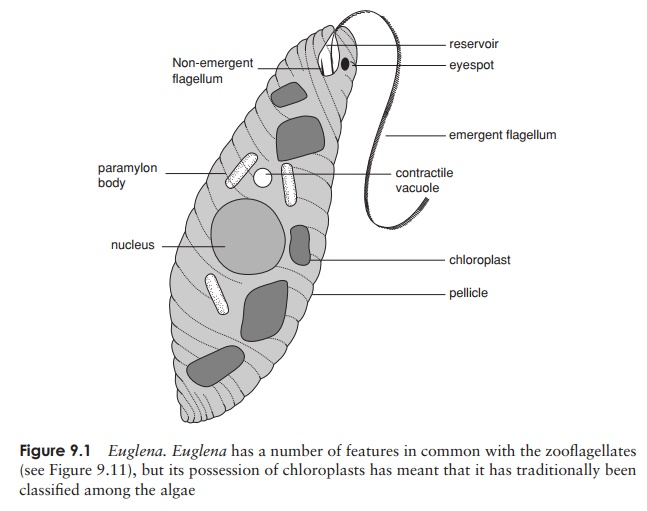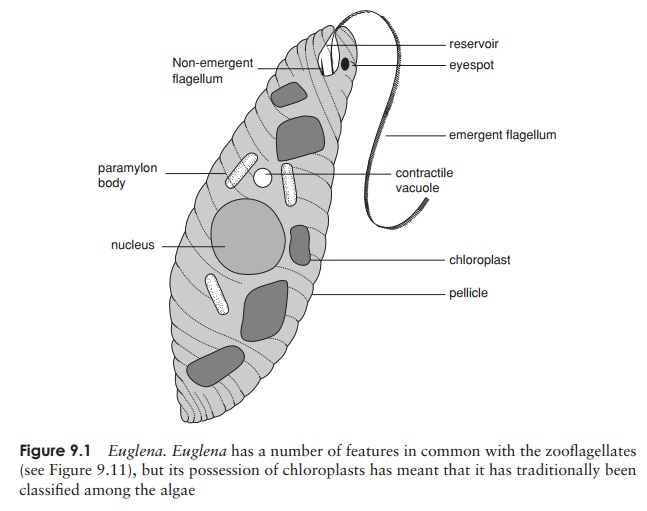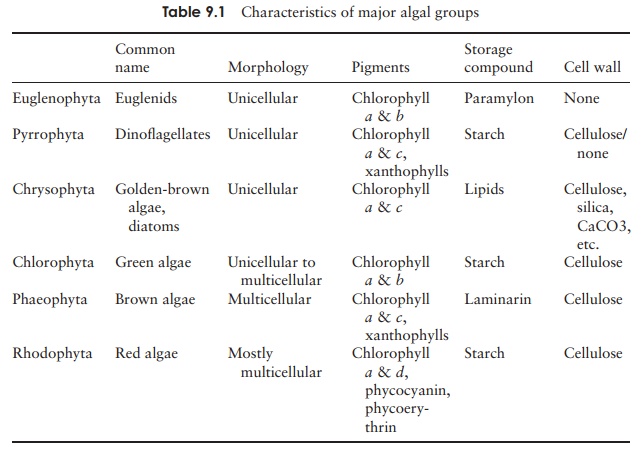Chapter: Essential Microbiology: Protista
Euglenophyta - Structural characteristics of algal protists

Euglenophyta
This is a group of unicellular flagellated organisms,
which probably represent the most ancient group of algal protists. Individuals
range in size from 10−500 µm.
Euglenophytes are commonly found in fresh water, par-ticularly that with a high
organic content, and to a lesser extent, in soil, brackish water and salt
water. Members of this group have a well-defined nucleus, and chloro-plasts
containing chlorophylls a and b (Figure 9.1). Thestorage product of
photosynthesis is a β-1,3-linked
glucan called paramylon, found
al-most exclusively in this group. Euglenophytes lack a cellulose cell wall but
have instead, situated within the plasma membrane, a flexible pellicle made up of interlocking protein
strips, a characteristic which links them to certain protozoan species. A
further similarity is the way in which locomotion is achieved by the undulation
of a terminal flagellum. Movement towards a light source is facilitated in many
euglenids by two structuressituated near the base of the flagellum; these are
the paraflagellar body and the stigma or eyespot. The latter is particularly conspicuous, as it is typically
an orange-red colour, and relatively large.

Reproduction is by binary fission (i.e. by asexual
means only). Division starts at the anterior end, and proceeds longitudinally
down the length of the cell, giving the cell a characteristic ‘two-headed’
appearance. During mitosis, the chromosomes within the nucleus replicate,
forming pairs that split longitudinally. Since the euglenophyte is usually
haploid, it thus becomes diploid for a short period. As fission proceeds, one
daughter cell retains the old flagellum, while the other one generates a new
one later. As in the binary fission of bacteria, the progeny are genetically
identical, i.e. clones. When conditions are unfavourable for survival due to
failing nutrient supplies, the cells round up to form cysts surrounded by a
gelatinous covering; these have an increased complement of paramylon granules,
but no flagella. An important respect in which euglenids may be at variance
with the notion of ‘plant-like protists’ is their ability to exist as
heterotrophs under certain conditions. When this happens, they lose their
photosynthetic pigments and feed saprobically on dead organic material in the
water.

Related Topics